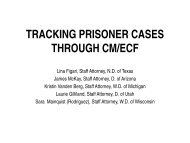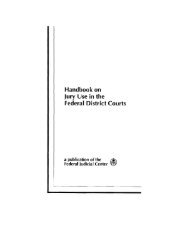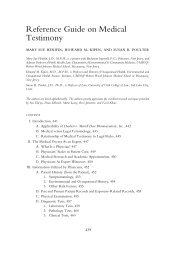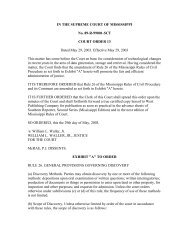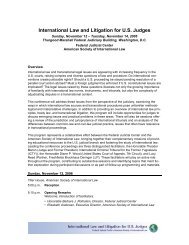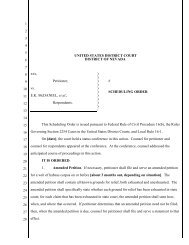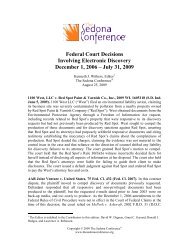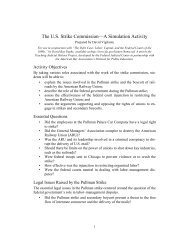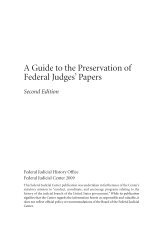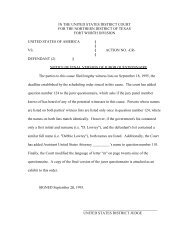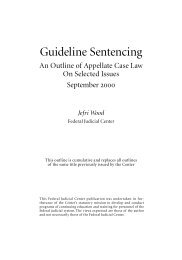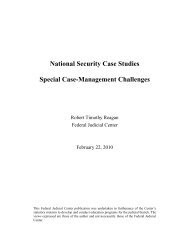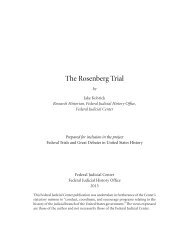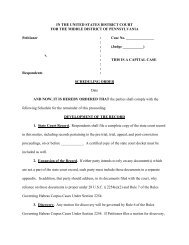Chambers Handbook for Judges - Federal Judicial Center
Chambers Handbook for Judges - Federal Judicial Center
Chambers Handbook for Judges - Federal Judicial Center
Create successful ePaper yourself
Turn your PDF publications into a flip-book with our unique Google optimized e-Paper software.
issued that can serve as guides. The judge may instead direct one of the<br />
parties to prepare the order <strong>for</strong> court approval. See infra section 7-2.F.6.<br />
After an order ruling on the motion has been signed, it is sent to the<br />
office of the clerk of court, where appropriate record entries are made.<br />
The clerk’s office then notifies all attorneys of record of the ruling by<br />
the court and usually sends them a photocopy of the order.<br />
Matters taken under submission must be carefully followed to be<br />
sure they are decided as promptly as possible. The secretary or law clerk<br />
should keep a list of matters under submission, deleting cases as the<br />
ruling on each is completed.<br />
H. Temporary Restraining Orders<br />
The procedural rules governing applications <strong>for</strong> temporary restraining<br />
orders are set <strong>for</strong>th in <strong>Federal</strong> Rule of Civil Procedure 65. When such<br />
orders are sought, plaintiff’s counsel may assert that the matter is of<br />
such urgency as to require an ex parte restraining order, that is, without<br />
prior notice to or opportunity to be heard by the defendant. If the<br />
judge is not in chambers at the time, the plaintiff’s counsel may exhort<br />
the law clerk or secretary to bring the order to the judge in open court,<br />
or to locate the judge, or to assist in some other way. The chambers<br />
staff should inquire about the judge’s policy on such emergency inquiries<br />
so as to be prepared to handle them.<br />
Most district judges will not sign requests <strong>for</strong> ex parte temporary<br />
restraining orders except in dire emergencies where the exigencies of<br />
the situation do not permit the opposing party to be heard, and then<br />
only after full compliance with Rule 65(b). If a lawyer comes to the<br />
chambers asking to see the judge about signing an ex parte temporary<br />
restraining order, some judges may wish their chambers staff to do the<br />
following:<br />
• Advise the lawyer that the judge does not ordinarily sign temporary<br />
restraining orders without hearing what the lawyer <strong>for</strong><br />
the other side has to say. This may be done by arranging <strong>for</strong> the<br />
judge to see both counsel in person or by a telephone conference,<br />
depending on the judge’s policy. The staff should communicate<br />
32 <strong>Chambers</strong> <strong>Handbook</strong> <strong>for</strong> <strong>Judges</strong>’ Law Clerks and Secretaries



